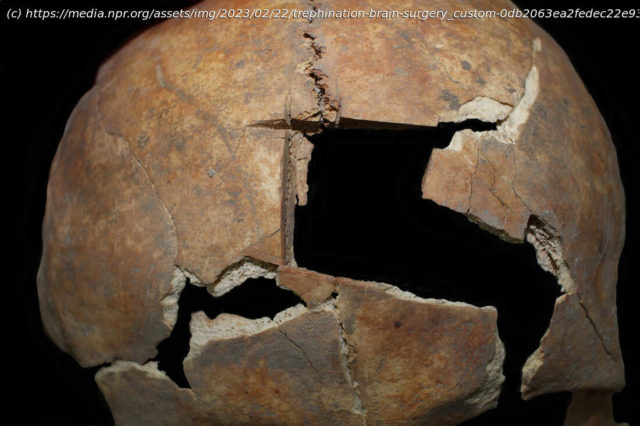Array
During the Bronze Age some 3,500 years ago, the town of Megiddo, currently in northern Israel, was a thriving center of trade. « It was already quite influential and powerful in the region, and had a very cosmopolitan population, » says Rachel Kalisher, a bioarchaeologist and graduate student at Brown University. « It’s one of the most important sites in the ancient Near East because it is sitting at the crossroads of these major trade routes that connected the East and West. »
Today, it’s the site of a major excavation, one that Kalisher has visited often. In a new paper published Wednesday in the journal PLOS ONE, she and colleagues describe something surprising they discovered there about ancient medical practices in the region.
Kalisher had been examining the remains of a burial site there, cleaning out the skull of an adult male. As she manually removed the dirt « with dental tools or wooden tools and maybe a paintbrush, » she explains, « I see this giant trephination in it. »
A skull trephination is a hole made by a surgical procedure during which a piece of the skull is removed to relieve pressure on the brain. In addition to treating penetrating head trauma at the time, Kalisher says, it was used to try to manage seizures and other medical problems.How scientists knew the hole had been made before death
So, when she spotted this square hole in the skull about the size of a large postage stamp, she knew it was special. « It looked so fresh and so sharp and it was unlike anything I’d ever seen, » she recalls.
Kalisher and the research team could tell the hole had been made in the man’s skull while he was still alive and not too long before his death, from the color and slope of the cut, the fact that there had been no growth of the bone in the skull after that excision was made, and that care had been taken not to puncture a tissue layer protecting the brain.






